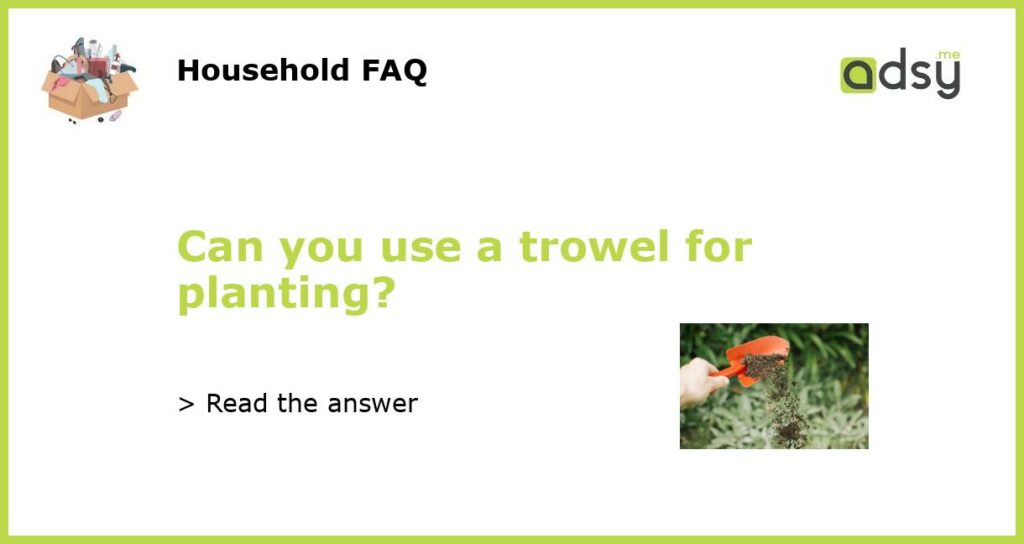Using a Trowel for Planting: Pros and Cons
Planting a garden requires the proper tools, and one of the most common tools used is a trowel. A trowel is a small handheld tool with a flat, pointed blade, and it is commonly used for digging and planting. But can you use a trowel for planting? In this article, we will explore the pros and cons of using a trowel for planting.
The Pros of Using a Trowel for Planting
1. Versatility: One of the main advantages of using a trowel for planting is its versatility. A trowel can be used for a wide range of gardening tasks, including digging holes, transferring soil, and planting small plants. Its compact size and narrow blade make it ideal for working in tight spaces and between plants.
2. Ease of use: Another benefit of using a trowel for planting is its ease of use. The handle of a trowel is designed to provide a comfortable grip, allowing for easy control and maneuverability. This makes it suitable for gardeners of all skill levels, including beginners.
3. Precision: When it comes to planting, precision is key. A trowel allows you to dig small, precise holes for planting seeds or placing small plants. This level of precision ensures that your plants are properly situated and have the best chance of thriving.
The Cons of Using a Trowel for Planting
1. Limited depth: While a trowel is great for planting small plants and seeds, it may not be suitable for larger plants or shrubs that require deeper holes. The relatively small size of a trowel’s blade limits the depth of the holes that can be dug. If you are planting larger plants, you may need to use a different tool, such as a shovel or a spade.
2. Strenuous on the hands: Planting can be a physically demanding task, and using a trowel for an extended period of time can be strenuous on the hands. The repetitive motion of digging and scooping can lead to hand fatigue and discomfort. If you have a large garden or plan to do a lot of planting, you may want to consider using a tool with a more ergonomic design, such as a garden trowel with a cushioned handle.
Alternatives to Using a Trowel for Planting
If you decide that using a trowel for planting is not the best option for you, there are several alternatives to consider:
1. Shovel: A shovel is a larger, more robust tool that is designed for digging and moving larger quantities of soil. It is ideal for planting larger plants or shrubs that require deeper holes.
2. Spade: A spade is similar to a shovel, but it has a narrower blade and is often used for cutting through roots and compacted soil. It is a versatile tool that can be used for digging, planting, and edging.
3. Hand Fork: A hand fork is a small, handheld tool with multiple tines. It is ideal for loosening soil, breaking up clumps, and removing weeds. It can also be used for transplanting small plants.
So, can you use a trowel for planting? The answer is yes, but with some limitations. A trowel is a versatile tool that is easy to use and provides precision for small planting tasks. However, it may not be suitable for larger plants or shrubs that require deeper holes. If you have a larger garden or prefer a tool with less strain on your hands, alternatives such as a shovel, spade, or hand fork may be more suitable. Consider your gardening needs and preferences when choosing the right tool for planting.






